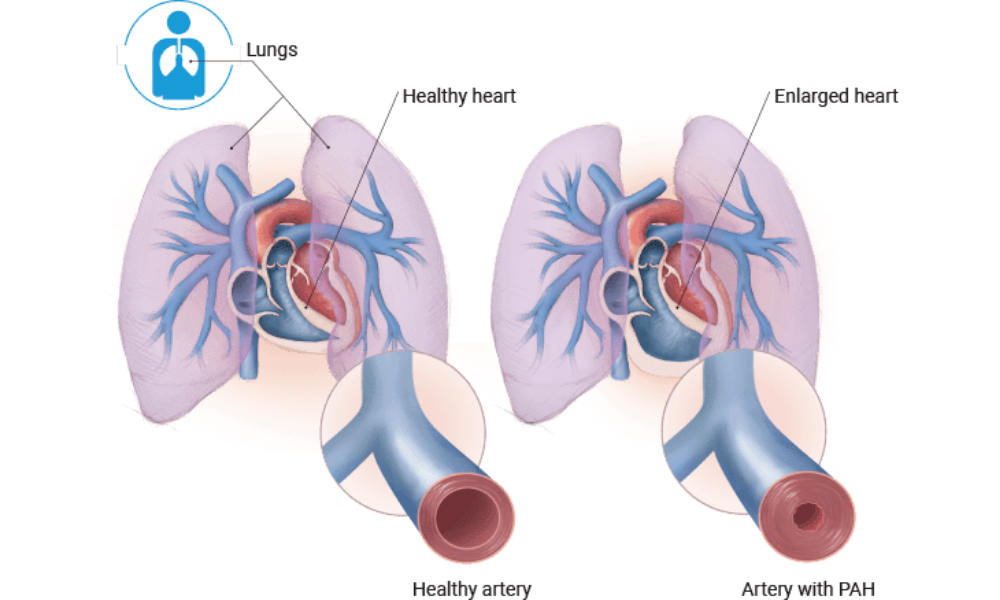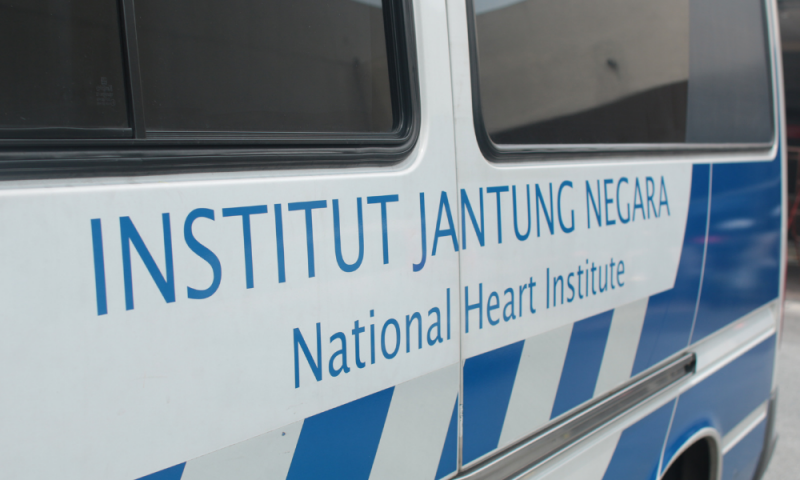Pulmonary hypertension: a rare, progressive debilitating disease
MOST people have heard the risks of high blood pressure.
However, only very few may know about the rare and life-threatening pulmonary hypertension disease which affects the arteries of the lung and the right heart chambers.

Unlike systemic blood pressure, which represents the blood pressure circulating in one’s body, pulmonary blood pressure indicates the force of the blood flow in the lungs.
According to Institut Jantung Negara (IJN) consultant cardiologist Dr Teoh Chee Kiang, pulmonary hypertension is caused by constricted blood vessels in the lung.
“The constriction slows blood flow through the lungs, causing the blood pressure in the lungs arteries to rise.
“Therefore, the heart must work harder to pump the blood through the lungs, which will make the heart muscle weak and eventually lead to heart failure.”
Citing data from Europe, Dr Teoh said the prevalence of the condition ranges between 10 and 52 cases per million.
“Based on that figure, we can estimate that there are about 300 to 1,500 patients in Malaysia living with the condition.
IJN is currently taking care of over 600 patients with pulmonary arterial hypertension.
The disease is mostly common among young women aged between 20 and 40.

Symptoms
According to Dr Teoh, the signs and symptoms of pulmonary hypertension develop gradually.
He noted that the common sign of the condition includes shortness of breath on exertion.
“Those living with the condition may often experience shortness of breath while carrying out normal routine activities such as household chore and mild exercise.”
Some patients may also have a chronic cough.
However, those with a more severe condition will have leg and tummy swelling due to water retention.
“Some of them can even have a dizzy spell and loss of consciousness when they exert themselves too much,” said Dr Teoh.
Causes
On top of its rare nature, Dr Teoh said pulmonary hypertension is a complex disease that is classified into five groups.
Elaborating the causes of each group, he said Group 1 can be categorised as non-cause (idiopathic) drug induced and heritable.
“Sometimes doctors can’t find a reason for high blood pressure in the lungs. Hence, in that case, the condition is called idiopathic pulmonary hypertension.
“A genetic mutation passed down through families may also play a role in why some people get it.”
Dr Teoh said that some of the cases in Group 1 – which has higher prevalence – can also be due to drug-induced pulmonary hypertension caused by a slimming pills.
“There is also associated pulmonary arterial hypertension which can be due to five other causes, such as a hole in the heart, connective tissue disease, HIV infection, Schistosomiasis (also known as snail fever and bilharzia) as well as liver disease.”
Group 2 cases are due to left-side heart disease while Group 3 is caused by lung disease.
Additionally, Group 4 cases are due to blood clots inside the lung vessel.
Dr Teoh said Group 5 includes patients that have pulmonary hypertension caused by other health conditions such as kidney disease, thyroid disease, blood disorder and a rare condition called Sarcoidosis.
Diagnosis
Pulmonary hypertension is a progressive condition that develops slowly without symptoms at an early stage.
According to Dr Teoh, the condition is very difficult to diagnose as it comes with non-specific signs.
“Usually patients living with pulmonary hypertension will take about one to two years to be diagnosed.
“The problem is that when they take a long time to diagnose the disease, it has already progressed to an advanced stage.”
When diagnosed late, Dr Teoh said the patient’s heart will already be weaker, which makes the treatment more challenging.
The diagnosis can be done through various health screenings, including X-ray, electrocardiogram and echocardiogram.
“Of all three, an echocardiogram is the most effective screening option to determine whether we should proceed with further investigations or not.
“If the echocardiogram tells us that the patient has intermediate or high probability, we will continue with additional checks to diagnose the disease and its group,” he said.
The additional work up include, blood test, computed tomography and right heart catheterisation – a procedure where a catheter is passed into a vein in the patient’s neck or groin in order to measure the lung pressure.
Treatment
As the disease is divided into various groups, the treatment depends on the underlying causes.
At present, Dr Teoh said there are treatment options only for patients living with Group 1 and 4 pulmonary hypertension.
However, he said the options come with a hefty price tag.
According to him, the treatment options are very limited in Malaysia but the doctors commonly use oral medications.
“The first line medication we use is phosphodiesterase 5 inhibitors, includes sildenafil and tadalafil– which has shown effectiveness to reduce and maintain the lung pressure.
This medication costs about RM3,500 per month for optimum dose.
“But if the patient is still not feeling the effectiveness of the drug, then we prescribe second line medication, endothelin receptor antagonist which costs about RM10,000 a month and the patient must take it for life,” he added.
Dr Teoh also noted that patients living with severe pulmonary hypertension may opt for lung transplantation, but admitted that the chances of finding one is low due to lack of donors in the country.
There are currently no treatment options available to permanently cure the disease.
Without treatments, patients living with the disease can only survive about 2.8 years.
But with the right medical care, the patients can live up to 10 years.
However, lifestyle modification, appropriate exercise and compliance to medication can make patient feel better, said Dr Teoh.
Lifestyle Changes
Dr Teoh warned that the disease can be very depressing for the patient and requires many lifestyle changes.
Women with pulmonary hypertension are generally advised against pregnancy, and if they do become pregnant, they will need careful monitoring by a multidisciplinary team.
“This is because the mortality rate of the mother is 30 to 56 per cent during the pregnancy period,” he said.
Air travel for patients with the disease often comes with risks and they must always consult their doctors to ensure they are fit before taking a flight.
“When flying at high altitude, the oxygen concentration will be lower and may cause shortness of breath to the patient,” said Dr Teoh.
The patients are also advised to reduce water and salt intake to prevent water retention in their body.
RM12.50 / month
- Unlimited access to award-winning journalism
- Comment and share your opinions on all our articles
- Gift interesting stories to your friends
- Tax deductable
